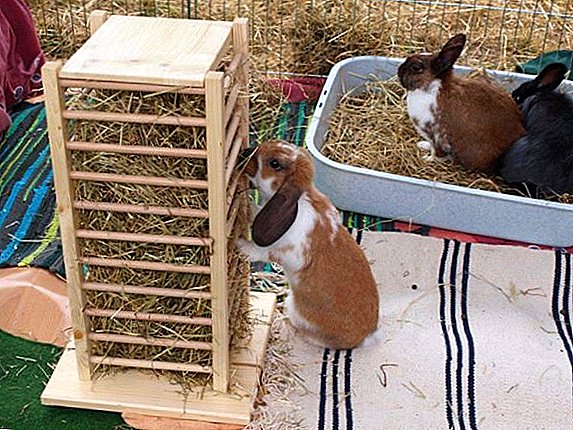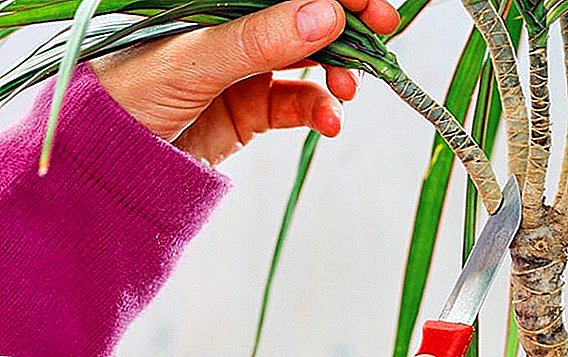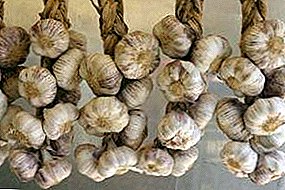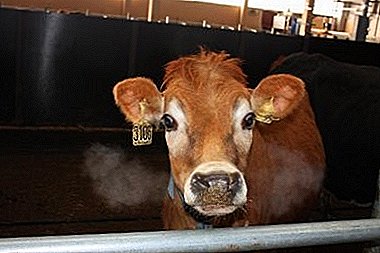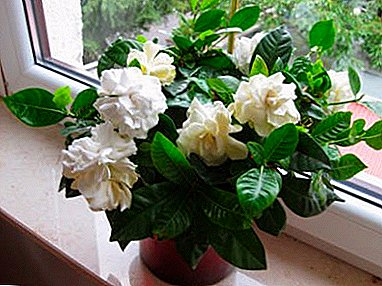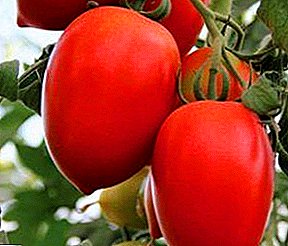
Connoisseurs of unusual and tasty varieties of tomato will surely enjoy the bell tomato of Russia. Compact lush bushes, decorated with clusters of pink-scarlet pear-shaped fruits, look very elegant and adorn the garden, veranda or greenhouse.
If you are interested in learning more about these wonderful tomatoes, read our article. In it we will present to your attention a complete description of the variety, its characteristics and characteristics of cultivation.
Tomato Bells of Russia: variety description
 Bells of Russia - high-yielding mid-early variety. Bush determinant, height 50-60 cm, standard. The formation of moderate green mass, the leaf is small, light green.
Bells of Russia - high-yielding mid-early variety. Bush determinant, height 50-60 cm, standard. The formation of moderate green mass, the leaf is small, light green.
For better fruiting, a slight staining is required, heavy branches need to be tied up. Fruits are collected in beautiful brushes of 6-7 pieces. In the fruiting stage, the plant looks very decorative.
Fruits are oval, pear-shaped, very smooth. Tomato weight from 50 to 60 g. In the process of ripening, the fruits change color from light green to rich pink and scarlet. The flesh is juicy, dense, low seed, with a high content of sugars and beneficial amino acids. Taste is saturated, sweet with easy sourness. Glossy peel protects ripe tomatoes from cracking.
Specifications
The grade of the Russian selection, is intended for cultivation in an open ground. In regions with short cool summers, it is better to plant tomatoes in a greenhouse or greenhouse. Possible landing in vases for home content. Productivity is good. From 1 square. m planting can collect up to 3 kg of tomatoes. Fruits are perfectly stored, transfer transportation without problems.
Fruits are ideal for canned wholegrain, salted or pickled tomatoes look very nice and do not crack. It is possible to use fresh. Miniature pear-shaped tomatoes are popular with children, they are also suitable for buffets or decorating dishes.
Among the main advantages of the variety:
- tasty fruits of unusual shape;
- tomatoes are suitable for canning and cooking various dishes;
- lack of care;
- quietly tolerates minor temperature fluctuations;
- resistance to major diseases.
Among the peculiarities of the variety are the demands on the nutritional value of the soil and the necessity of staving a bush.
A photo
See below: Tomatoes Bells of Russia photos

Features of growing
 Seeds are sown on seedlings in the second half of March. With subsequent transplantation into the greenhouse, you can sow them earlier. The soil is preferred light, consisting of sod land, humus and sand. Seeds are presoaked in a growth stimulator or freshly squeezed aloe juice, and then sown with a depth of 2 cm. From above, the container is covered with a film and placed in heat. After the appearance of germs capacity is exposed to bright light.
Seeds are sown on seedlings in the second half of March. With subsequent transplantation into the greenhouse, you can sow them earlier. The soil is preferred light, consisting of sod land, humus and sand. Seeds are presoaked in a growth stimulator or freshly squeezed aloe juice, and then sown with a depth of 2 cm. From above, the container is covered with a film and placed in heat. After the appearance of germs capacity is exposed to bright light.
In the phase of the appearance of 2-3 true leaves, the seedlings swoop and fed with full complex fertilizer. Watering is moderate, only warm, separated water is used. Grown up seedlings need to harden, bringing to the open air, first for half an hour, and then leaving outdoors for the whole day.
Planting in the greenhouse is possible in early May, in open ground - in late May-early June. Before planting, the soil is loosened, a small amount of complex fertilizers or wood ash is placed in the wells. The optimal landing pattern is 3 plants per 1 square meter. m. Thickness of planting can cause disease and reduce fruit bearing. Tomatoes like not too frequent, but plentiful watering with warm water. Need feeding with alternating mineral and organic fertilizers.
Of mineral preference is given to complexes with a high content of phosphorus and potassium, an excess of nitrogen causes the discharge of ovaries. From organic fit divorced mullein or bird droppings. Grown bushes form, removing part of the lateral processes and lower leaves. Branches with fruits better tie to the support.
Pests and Diseases: Control and Prevention
The variety is fairly resistant to diseases. For prophylaxis, it is necessary to remove weeds in a timely manner and to soil the soil with straw or peat. Spraying with a pink solution of potassium permanganate helps from gray rot; copper-containing preparations will prevent late blight. Quite good results are given by frequent spraying with phytosporin.
To destroy insects, you can use insecticides or proven popular recipes. The soapy water, naked slugs and Colorado beetles helps to fight with aphids. It is destroyed by an aqueous solution of liquid ammonia.
See also what chemicals can be used to combat the Colorado potato beetle: Aktara, Corado, Regent, Commander, Prestige, Lightning, Tanrek, Apache, Taboo.
Bells of Russia - a promising variety for open ground, greenhouses or flowerpots. Plants are suitable for experienced or novice gardeners, they do not require undue care, providing a stable crop.


